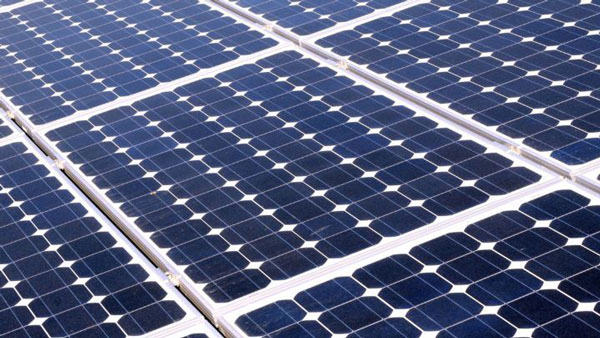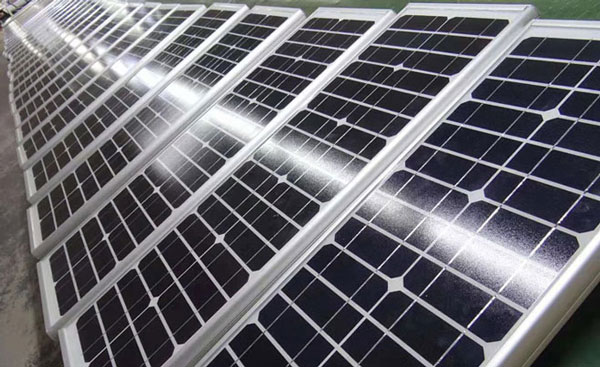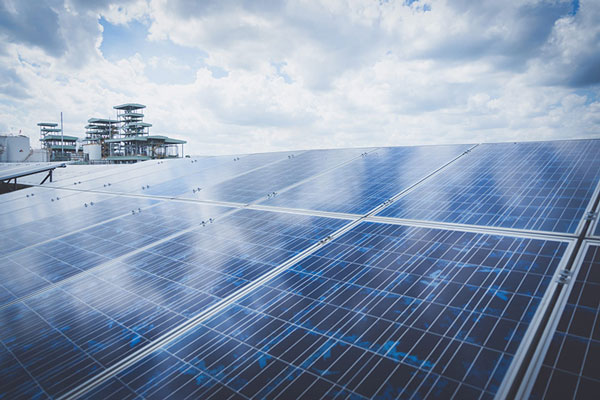Affordable Manufacturing
Polycrystalline silicon solar cells, also known as multi-crystalline silicon solar cells, are used for solar energy generation on a large scale, which is due to a significant cost performance. Unlike monocrystalline silicon solar cells, these types of cells can be obtained from silicon crystals melted together. Since this technology uses silicon raw material more effectively, it reduces the price of the material.
For the lower price per watt, polycrystalline silicon solar cells or panels are used for the installation of residential or commercial solar panels. Lower cost makes this material/technology more popular and affordable. The reasons for the efficiency of such technology include the wide availability of silicon, its stable price due to its abundance and nature, reasonable energy delivery costs for production, efficient delivery of energy, water, and other resources for manufacturing, and an efficient, easily scalable production process.
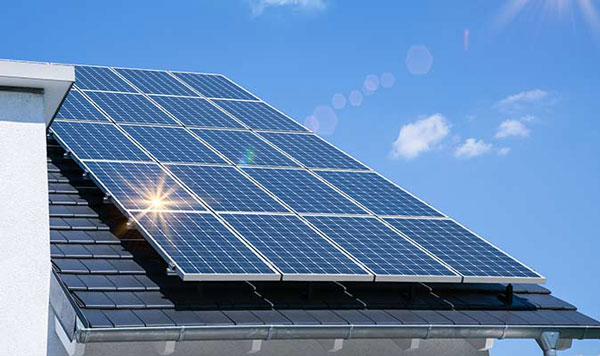
The availability of raw material
Silicon, which is a basic element of such solar cells and the second most plentiful element in the Earth’s crust, is delivered to solar cell production from silica rock. It implies that such material can be produced in any part of the world with the raw material being easily accessible.
Efficient production due to energy costs
Though both monocrystalline and polycrystalline solar cells are based on the silicon material and the same manufacturing processes, they differ at the early stage of the delivery of raw material for manufacturing. While the production of monocrystalline silicon requires the so-called Czochralski process, which requires huge energy and energy delivery costs for the ovens and vacuum chambers, polycrystalline silicon can be obtained for production by melting silicon rocks. Lower energy delivery costs and more efficient delivery of other manufacturing needs result in 20-25% lower operating costs related to energy delivery. However, such expenses are significant and make up 15-18% of the total operating costs. In any case, more efficient costs make it more affordable for consumers.
Overall efficient delivery system
Polycrystalline solar cells have an energy payback time in the range of 1 to 4 years since given the average 25-30 year lifespan of a solar panel, which is an average efficiency rate for delivery system. The manufacturing process is highly scalable as technology is already developed. Both factors prove that it is effective for large-scale solar energy installations.
Low carbon footprints
The delivery of solar panel production and consumption instead of the production and consumption of fossil fuels decrease greenhouse gas emissions. Indeed, the technology has been used and expanded on a large scale to provide humanity with the opportunity to enjoy using resources while not such heavily damaging the environment.
Effective Use of Silicon
Polycrystalline silicon solar cells are noted for the efficient use of silicon, contributing to their cost-effectiveness and environmental friendliness. They use silicon crystals that do not meet the requirements of purity for monocrystalline С ell С ells, showing a close and even higher efficiency in converting sunlight into electricity.
Method of Production
The production of polycrystalline C ells is melting several fragments of silicon together. This method of production is less wasteful than the production of monocrystalline silicon С ells, as an extensive amount of silicon is lost in the cutting of the desired shape. The advantage of the melting method is that the overwhelming majority of raw silicon is used, and there is almost no waste.
Enhanced Material Utilization
Polycrystalline silicon cells are created by casting molten silicon into square molds. The shape of the cell is simple and maximized to fit as many squares as possible into the solar panels. It is distinctly more space-efficient than using octagonal molds in monocrystalline С ells, leaving no gaps between the cells on the panel. As a result, the same area of a panel with P cells generates more electricity than a panel with M cells
Reducing Waste Production
The process of producing polycrystalline silicon С ells is less regulated in terms of how the crystal structure is to be controlled, compared to the creation of monocrystalline silicon cells. This means that less raw material will end up being thrown away. Moreover, it might be surprising to know that the P cell manufacturing facility produces less waste than the M cell manufacturer, which provides substantial buildings and storage weight to two main types of solar production cells.
Budget Allocation
Another advantage of using polycrystalline silicon is that it saves money. The overall cost per watt of solar energy is lower because silicon is used more efficiently. This price reduction will allow more people to access and make the implementation of environmental and green technology easily applicable.
Recycling
Recycling solar panels made using polycrystalline silicon is relatively easy because of its simple chemical composition. This characteristic of these products and the possibility of reprocessing their materials allow the silicon used in their production to be reused later.
Widely Adopted Insights
Polycrystalline silicon solar cells are not only popular because of their affordability and a high degree of silicon utilization; choosing these cells has become an essential part of recognizing the way solar technologies have been evolving and the extent to which they have been adopted globally. It is important to note that their extensive use is a characteristic of several market segments in different regulated markets. There is a greater degree of competitiveness in the countries considered due to the lower production costs and the wide range of environmental conditions in which the product operates.
Solar Panel Market Changes
The statistics presented in the global market indicate that there is a considerable component of the solar panel product which is comprised of polycrystalline silicon cells. Several factors contribute to the growing use of such cells in different country-regulated markets and emerging economies. The overall cost of this technology is an important factor in its adoption due to the affordability in terms of production, shipping, and installation. The high performance of this technology in various environmental conditions is a key factor in the use of polycrystalline silicon cells in different countries.
Drivers of Adoption
The main factors driving the adoption of these cells are not only related to the low level of performance embodied by conventional cells but the higher production cost. In addition to decent performance, polycrystalline silicon cells are important because they create a balance between the cost and quality of the technology. Also, many reports indicate that this technology is not only part of large-scale installations but an important component of single-family residential systems. In addition, the use of such cells in countries with frequent cloudy weather proves that polycrystalline silicon cells work effectively in less intense sunlight.
Types of Adoption
The use of polycrystalline silicon has accelerated the placement of photovoltaic systems in many countries and growing economies, including China, India, and the United States. For India, this promising technology promotes greater electrification of rural areas. Another factor that has driven the recognition of this type of energy is the introduction of advanced technology in the casting and crystallization of silicon. This aspect has had a positive effect on the overall efficiency that significantly exceeded a considerable part of the more expensive cell technologies. Finally, one of the most important factors that drives their adoption is that they are environmentally friendly. They are also can be become a part of recycling support the overall move to environmentally friendly solutions and the way to address carbon emission contribution finally.
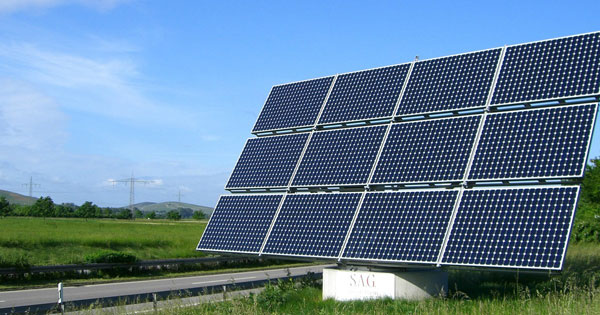
Long Term Performance Analysis
Polycrystalline silicon solar cells are well-known for cost-effectiveness and environmental advantages at the initial stages. However, the benefit of these cells also includes their long-term performance. The data available in recent studies demonstrate that such stellar performance remains at high rates for many years when the efficiency obtained with the help of these cells does not fall lower than 80% at year 25.
Considering their durability in various climatic conditions and consistency of energy output, the value of polycrystalline silicon solar cells as a reliable form of technology is increased. It is possible to conclude about the positive aspects of their environmental impact through lifecycle assessments.
Durability in Various Climates
One of the reasons why polycrystalline silicon solar cells are known for long-term performance is their ability to survive many years regardless of the climatic conditions where they are used. The cells can survive in hot weather . Moreover, the environmental conditions in many different parts of the world turn sunny weather into humid or scorching, and the performance of polycrystalline cells either is not reduced or stays at high rates.
Consistency in Energy Output
Another reason for the long-term performance of polycrystalline silicon solar cells is the consistency of energy output. Such cells lose their efficiency rate at very low rates annually, from 0.5% to 0.7%. Polycrystalline cells do not lose efficiency at high rates, guaranteeing users the opportunity to receive significant energy amounts.
Cost-to-Benefit Ratio in the Long Term
Polycrystalline silicon solar cells are affordable at the time of purchasing and using, but their usability over time defines the cost advantage. Considering the total cost of ownership in solar-power projects, including installation, operational, and maintenance-related costs, the cost advantage obtained with the use of polycrystalline solar cells is beneficial .
Impact on Lifecycle Assessments
Finally, taking into account the environmental advantages of the solar energy source over time, with the minimal-to-zero necessity to cut down trees or harm the environment, and the ability of the cells to be used for many years or even recycled at the end of hour long-term usability make these cells advantageous in lifecycle assessments.
Environmental Impact Considerations
The use of polycrystalline silicon solar cells is highly environmentally friendly. This type of solar cells helps not only reduce the use of fossil fuels but also has a number of advantages in the use of resources and in the disposal of used solar cells, which makes this type of solar cells more environmentally friendly and one of the leaders in the field of use of renewable energy sources. Launching the solar panel industry is associated with less energy-efficient processes, harmful to nature and human resources, resulting in a larger carbon footprint of the Monocristal Silicon Cells in production compared to the launched generators based on silicon cells that occur.. Thus, the Polycristal Silicon Cells are a more advanced and environmentally friendly technology than, for example, the Monocristal Silicon Cells.
Reduction of Greenhouse Gas Emissions:
Polycrystalline silicon cells convert sunlight into electricity without emitting greenhouse gases into the atmosphere. Therefore, the use of the coating throughout its operation leads to great savings in carbon dioxide and other harmful substances. Thus, 1 kilowatt-hour of transmitted solar power, on average, avoids the emission of 0.8 kilograms of carbon into the atmosphere.
Efficient Use of Silicon
The production process of Polycristal Silicon Cells is very efficient and little silicon is wasted. This aids in the production of high quality solar cells, but also much of the waste comes form silicon feed and is harmful to the environment. That is why as much silicon waste should be avoided as possible. Thus, this type of solar cells is produced more efficiently and uses less resources regarding used raw materials. Therefore, the production of this type of solar cells is more environmentally friendly.
Recycling
At the end of the life of a solar cell, even the Polycristal of this type of silicon solar cells can be recycled to collect and separate in some applications valuable resources such as glass, aluminum and silicon-containing compounds (solarbiel.laptin: 2021). Helps, therefore, to avoid the production of a large amount of waste and to become a more environmentally responsible contributor to the creation of a solar cell circular economy.
Impact on Soil Use
Farms using launched panels can be set up on arable land, including degraded lands, so the solar panels do not affect the fertile soils. Solar power plants can be co-located with the wildlife and natural flora of the target site, installed in two sites serves a dual purpose, the use of polycristall panels is useful.
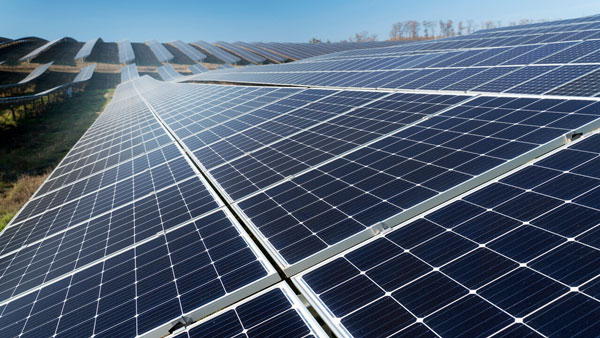
Apps in Various Settings
Polycrystalline silicon solar cells are highly adaptive in their application to external settings. While they are a popular choice for most residential purposes, they are increasingly being integrated into a range of alternative settings. Solar cells are becoming a common solution to the need for alternative energy in transportation, as well as public infrastructure. Beyond residential areas, they are used in large-scale solar farms to supply energy over vast territories. Polycrystalline silicon solar panels strike a balance between cost and effectiveness that makes them a common choice in residential solar systems. On the one hand, they can reduce residence owners’ electricity bill expenses to a great degree; on the other, they offer an environmentally-friendly solution with the disadvantage that their aesthetic appeal might be limited.
Utility-Scale Solar Installations
In large utility-scale solar installations, the use of polycrystalline silicon cells is a common choice when it comes to both environmental friendliness and cost-effectiveness. Solar farms can be vast, covering several acres of land and requiring an effective solution in the form of a solar panel that is able to provide consistent performance over the long run, without requiring significant maintenance. Solar energy installations of this kind are urgently needed to meet the otherwise ongoing demand for fossil fuel. In order to balance out the vast energies consumed by the units of today, a greater number of solar energy services of this kind is utterly indispensable.
Public Infrastructure
Beyond utility-scale installations, polycrystalline silicon solar cells are also used for cities’ public infrastructure, ranging from street illumination and traffic signalization to recharging units from which e-cars and scooters draw their energy. Again, the need for polycrystalline silicon cells is due to the need to create an environmentally-friendly, affordable, and effective solution to the rising problem of public infrastructure. Polycrystalline silicon cells can operate effectively in numerous settings, and their use contributes to the fight against unsustainable urbanization.
Remote Areas
Finally, solar cells can be used for a variety of remote needs. In many areas around the world, living conditions are still rather primitive, and the majority do not have access to electricity. Beyond residential use, solar cells can be used in many schemes in conjunction with batteries that do not have any external power source. Units of this kind make living in these remote areas smoother and more comfortable – units in medical clinics and schools in these underdeveloped areas of the world now have light, water pumps facilitate access to clean water, and communication equipment is made possible thanks to solar unit use. The result is that the establishment of economically viable projects reliant on solar cells in these areas becomes possible. These cells have also been available in some more modern applications, used in constructing solar boats and UAVs. In the case of the latter, such cells are used due to their lightness, as well as energy and practical characteristics.

